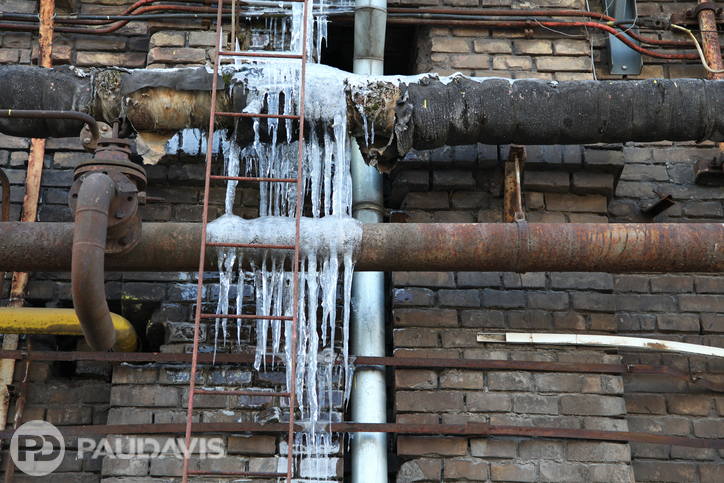
In February, an unusually brutal cold snap overtaxed the Texas power grid and caused a widespread and prolonged power loss. As the thermometer plunged and remained well below freezing, four million Texans shivered in the dark. Businesses struggled to safeguard valuable assets and blunt the financial impact of the weather disaster. One significant source of property loss during the frigid marathon? Water pipes that froze and burst.
In a region that is relatively balmy year-round, piping systems were particularly vulnerable to freezing temperatures. “In Canada, builders and designers take precautions to prevent pipes from bursting when temperatures drop,” says Bob Hillier, President of Paul Davis of North Houston. “They route piping away from outer walls or insulate piping, for example. Protective measures aren’t usually necessary in Texas, so our systems were particularly vulnerable when challenged by very cold temperatures coupled with indoor heating loss.”
Paul Davis is working with many affected commercial customers in Texas – and their insurance carriers – to repair burst pipes and restore soaked interiors. Because piping is often concealed behind walls, restoration is frequently more extensive than it may first appear, requiring careful detective work to uncover the damage, sophisticated drying techniques and substantial building material replacement.
As Hillier and his crews work with afflicted customers, they are advising property owners and managers how to avoid frozen pipes in the future:
- Drain outdoor taps and supply lines prior to winter if they will be unused until spring. If they are in frequent use, watch forecasts and drain them ahead of cold snaps.
- Insulate exposed piping. Slowing heat loss when the temperature drops often prevents freezing until the weather warms or, in the event of utility interruptions, the power returns.
- For vulnerable piping situated in exterior walls, open taps to a trickle during freezing weather. “Moving water freezes much more slowly than stationary water,” Hillier explains. “Allowing water to trickle eases the incredible hydraulic pressure that ice creates as it freezes and expands and presses on still liquid water around it.”
- If renovating structures, boost the R-value of new insulation to help protect pipes from future cold snaps.
- Seal or caulk cracks that allow cold air to infiltrate structures.
- If you suspect pipes are in danger of freezing, apply gentle heat – often, opening interior doors or cabinet doors to passively heat garages or cabinet interiors can be enough to prevent freezing. Avoid using blow torches or similar equipment to rapidly thaw frozen pipes. This approach, Hillier cautions, often does more harm than good.
- Know where your water shut-off valve is and how to operate it. If pipes do burst, shutting off the water supply immediately minimizes damage as temperatures rise and water begins to flow freely again.
Has your commercial property been affected by flooding? Paul Davis promises to arrive quickly and will be ready to handle any size loss.
